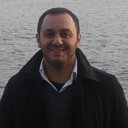Coexistence of intracranial germ cell tumor and craniopharyngioma in an adolescent: case report and review of the literature.
کلید واژه ها
خلاصه
OBJECTIVE
We present the case of a patient treated for intracranial germ cell tumor in which elements of craniopharyngioma were found in the residual tumor mass.
RESULTS
A 17 year old patient presented with a history of secondary amenorrhea. She deteriorated with headache and left eyelid drop, paresis of the abducent nerve and convergent strabismus (Parinaud syndrome). β-HCG was 722mIU/ml and pregnancy was excluded. AFP was 6322 ng/ml. Brain CT scan showed a large endosellar tumor to the hypersellar region. There was left papillary atrophy. MRI confirmed a tumor to dorsum sellae. Primary germ cell intracranial tumor was diagnosed. Severe clinically evident pituitary failure developed with signs of increased intracranial pressure and brain edema as well as diabetes insipidus, while AFP increased to 15786,3ng/ml. Urgent treatment with combination chemotherapy including cisplatin etoposide and bleomycin (ΡEB) was administered for 4 courses. As a result her clinical condition improved and tumor markers dropped but nevertheless did not become normal. In addition CT scans revealed a remaining endocranial mass and therefore the patient was subjected to high-dose chemotherapy followed by autologous stemcell rescue which resulted in complete clinical and biochemical remission. Due to the persisting mass in the area, it was delivered radiotherapy.
CONCLUSIONS
The above case is extremely rare in worldwide literature. Dysgerminoma may coexist with craniopharyngioma which in fact may be part of a germ cell tumor in the context of dysembryogenesis and benign "teratoma".




